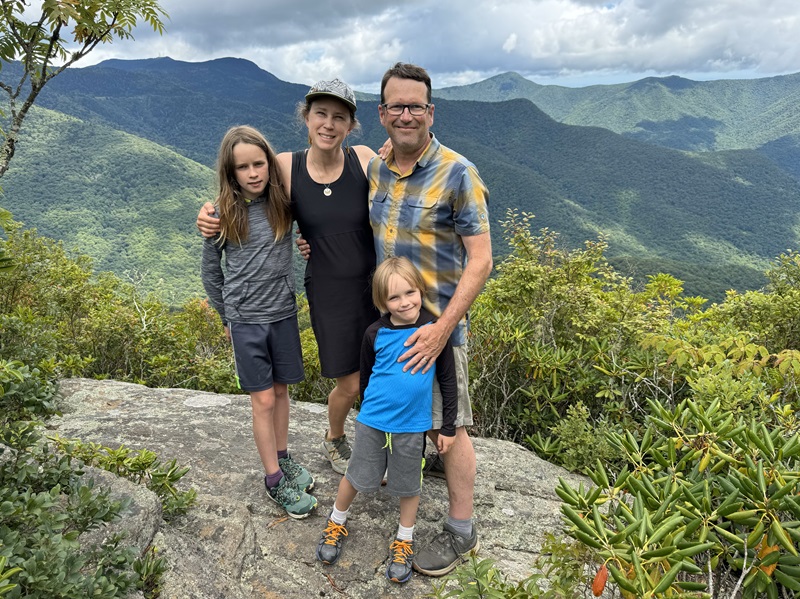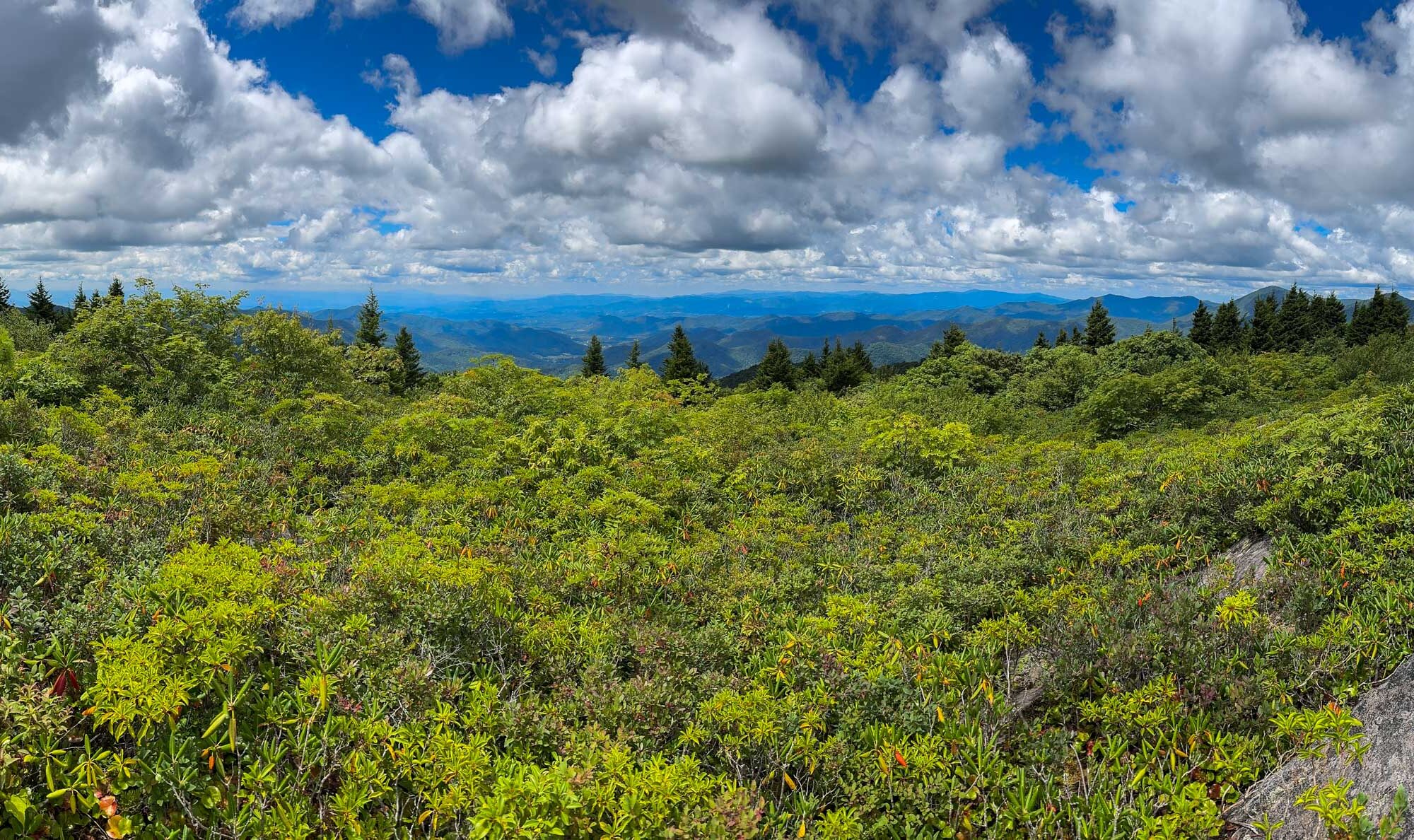With good reason, life brought us back to the southern Appalachian Mountains. My origins are in and around this region. The connection is bolstered by my deep love of the Klamath Mountains and the connections these two places share. We took a family hike–a new joy because our 5-year-old can hike with us now–to a special landscape near Asheville, North Carolina. Here we explored several rock outcrops of the southern Appalachians.
When I get up to the highest ridges and mountains in this area, my favorite places to go are the rock outcrops. They are infrequent and insular–contrasting the omnipresent deciduous forests of green. There are also terrific views from these places! We found such an outcrop on the metagraywacke around the Craggy Pinnacles along the Blue Ridge Parkway.
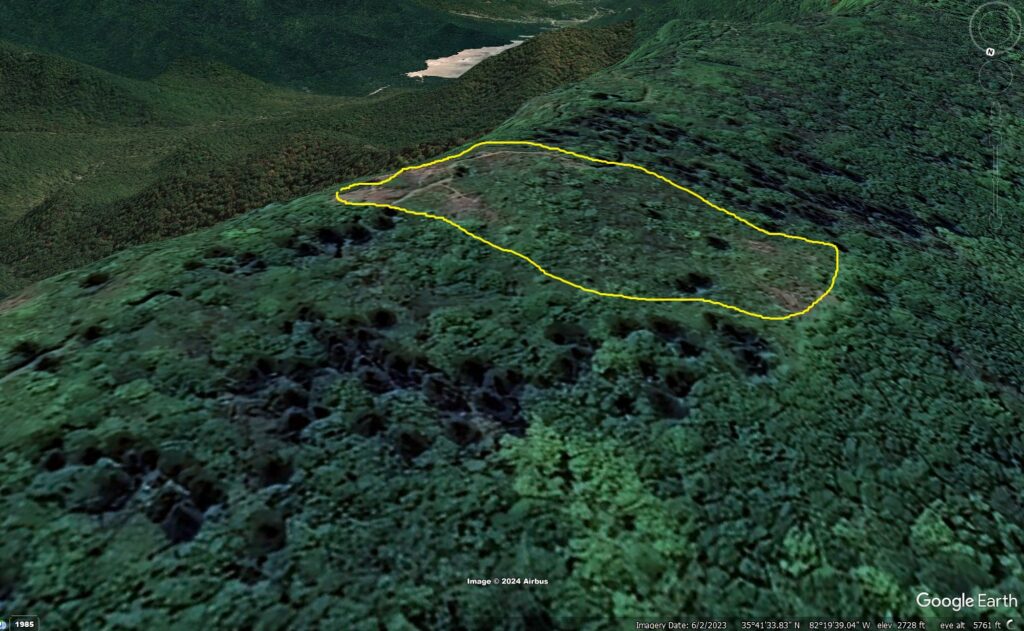
A type of “island” biogeography
Vegetation communities on high elevation rock outcrops, within predominantly forested landscapes, are unique because of localized geology, aspect, and inherent isolation. This isolation nurtures rarity in plants through both neoendemism and paleoendemism. What follows will focus on the paleoendemic club- and fir-mosses along the hike because we were all so impressed by them
Spore bearing plants and ancient evolutionary lineages
In an earlier blog, I explore the world of cryptogams of the Klamath Mountains. Just know that the club- and fir-mosses discussed herein are part of a collective group of spore bearing organisms–including ferns, horsetails, and liverworts–that were the progenitors of the seed, the cone, and the flower! These represent the most ancient lineages of land-dwelling plant species on Earth. I think that is so cool.
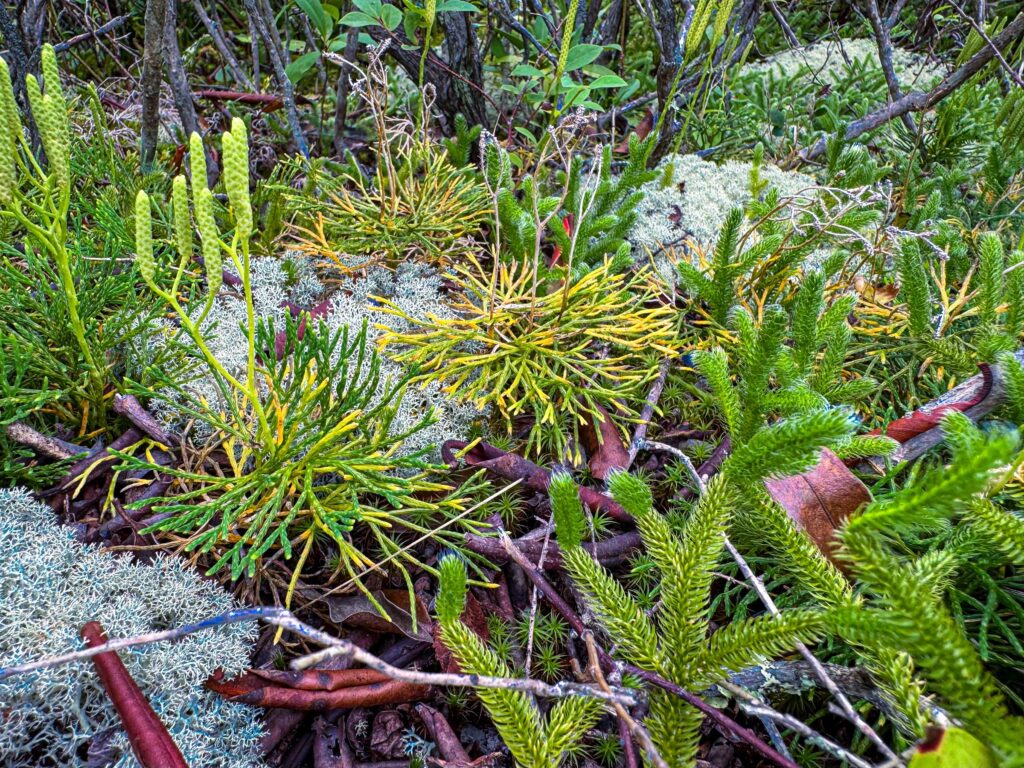
Lycophytes, Ferns, and Horsetails
These three groups have origins in the Devonian (420–360 Ma) with ancestors that were among the first vascular, spore-bearing land plants. All three groups are less highly derived than seed and woody tissue producing angiosperms and gymnosperms. However, the importance of the ascension of spores cannot be understated. Before the spore, distribution of offspring could only happen by water movement.
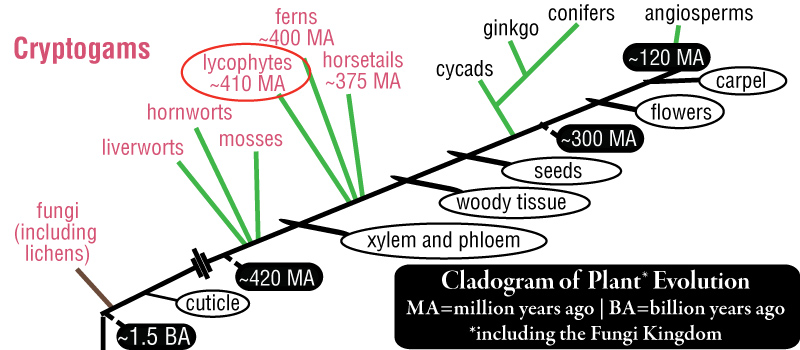
Lycophytes
In the Carboniferous (350-300 Ma) some lycophytes were forest-forming trees, reaching heights of 30 meters or more. Today it is a small and inconspicuous group. Lycophytes are believed to be the oldest extant group of vascular plants–having evolved about 410 Ma. Lycophytes have leaves called microphylls that contains one single, unbranched leaf vein. While a number of lycophytes are found in the fossil records, today the extant groups include spike-mosses, clubmosses, and quillworts.
Clubmosses of the southern Appalachians
We found three species on our hike but up to nine species are found in this area according to observations on iNaturalist.
Other rock outcrops of the southern Appalachians plant specialists
The overstory on this particular outcrop was mostly ericaceous shrubs including Rhododendron catawbiense, Kalmia latifolia, and Vaccinium Corymbosum. Other components include Sorbus americana and Picea rubra. Check out the panoramic below for the view over the shrub-canopy. See all of my iNaturalist observations HERE.
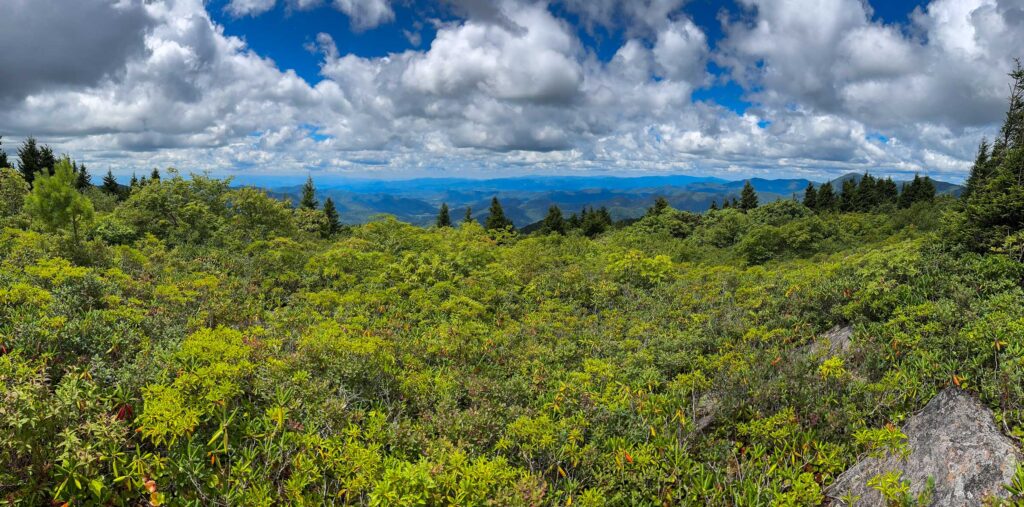
- Some of this post was excerpted from the Cryptogam chapter in The Klamath Mountains: A Natural History.
- Read more about southern Appalachian high elevation rock outcrop vegetation HERE.
